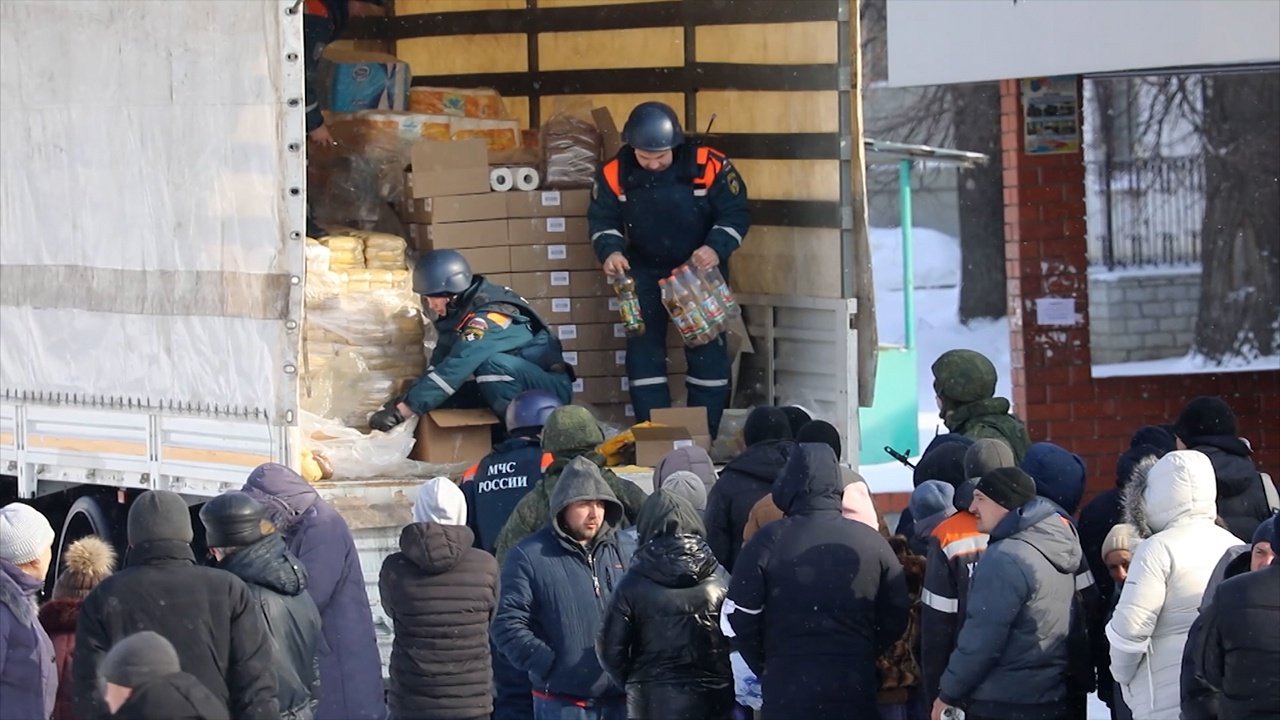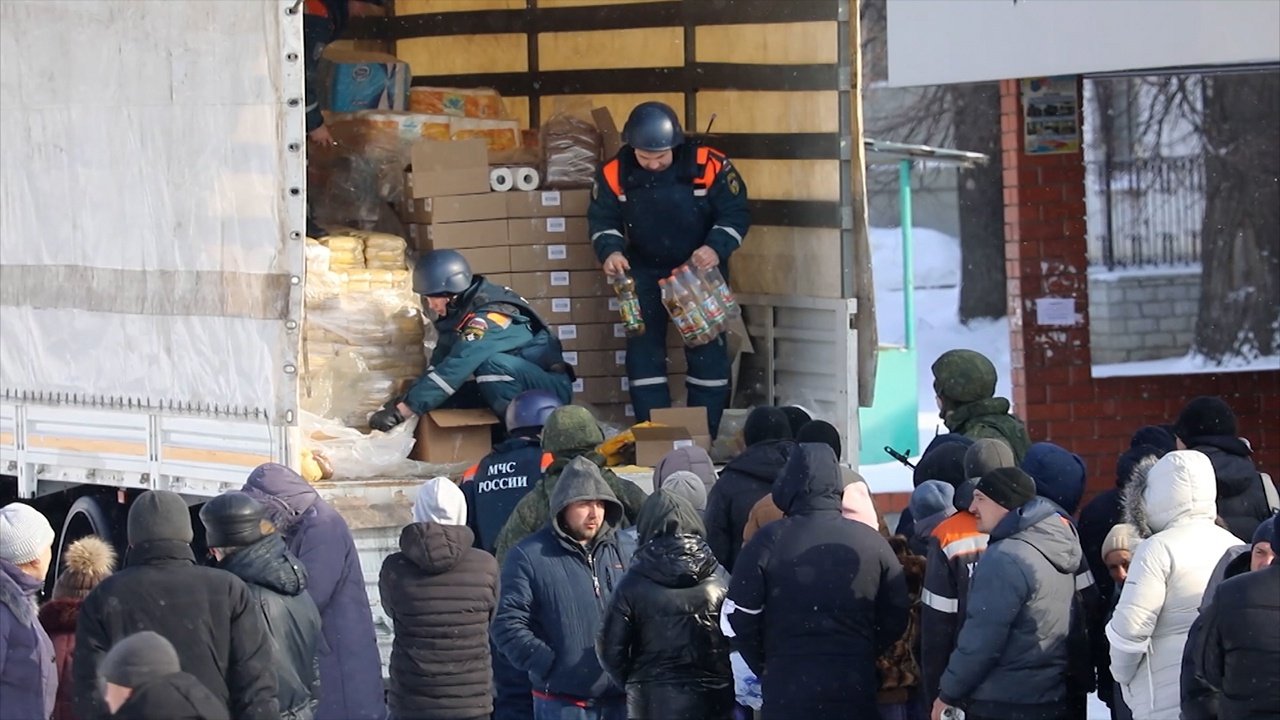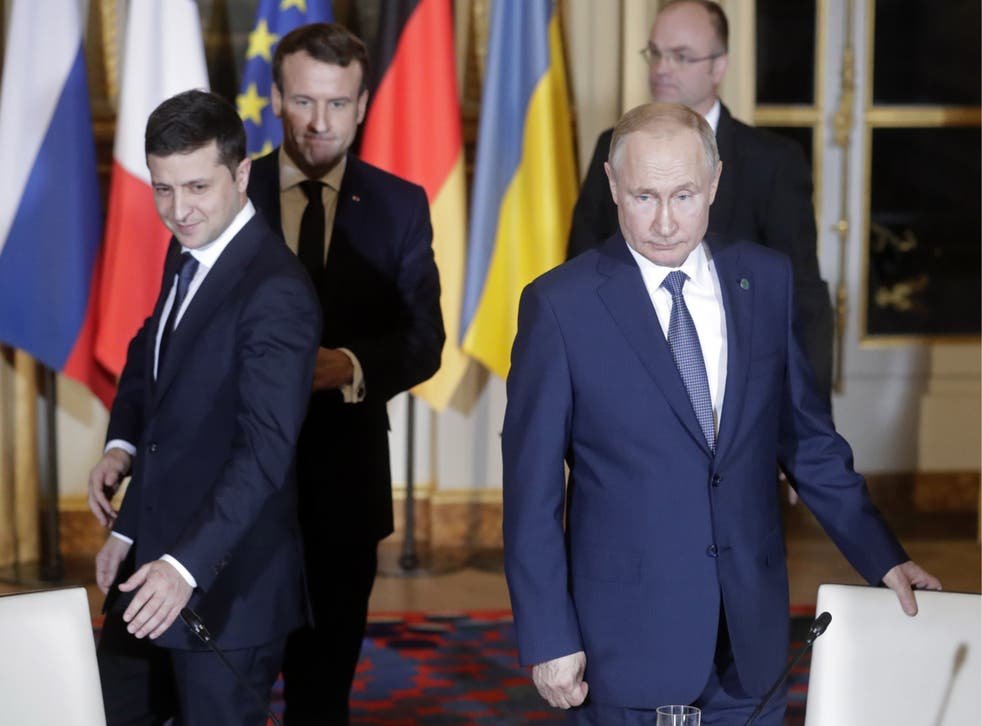Beijing is stepping up the militarization of its southeast coast as Communist China threatens Democratic Taiwan with Invasion.
The Communist CCP’s People’s Liberation Army PLA has been upgrading its missile bases, and one Beijing-based military source said it has deployed its most advanced hypersonic missile the DF-17 to the area. The DF-17 has a maximum range of 2,500km (1,550 miles).
The DF-17 hypersonic missile will gradually replace the old DF-11s and DF-15s that were deployed in the southeast region for decades. The new missile has a longer range and as per Chinese propaganda, it is allegedly able to hit targets more accurately.

As per sources, Currently, the PLA has only about 100 DF-17 missiles, but it is expected to increase production and deployment in the years ahead.
Satellite images show that both the Marine Corps and Rocket Force bases in Fujian and Guangdong provinces have expanded in recent years, according to Andrei Chang, editor-in-chief of the Canada-based Kanwa Defence Review.
“Every rocket force brigade in Fujian and Guangdong is now fully equipped,” he said.
“The size of some of the missile bases in the Eastern and Southern theatre commands have even doubled in recent years, showing the PLA is stepping up preparations for a war targeting Taiwan.”

Chang said one base in Puning, a city in Guangdong, had been upgraded and now housed a new type of ballistic missile, but declined to say what type.
“The missile base in Puning is responsible for attacking southern Taiwan, but the DF-11 and DF-15 do not have a long enough range to fly over the Central Mountain Range to hit the island’s airbases in Taitung and Hualien [both in eastern Taiwan],” he said.
Chang also said the PLA had deployed its Russian-built S-400 Triumf air-defence system that could detect and shoot down missiles, drones and jets from up to 600km away to defend against any attack by the Taiwanese air force.
“The S-400’s radar system is very sophisticated and is able to cover the whole of Taiwan,” he said. “It is able to shoot Taiwanese military aircraft once they take off.”
The PLA’s coastal defences also include 20 air force brigades – some of them armed with the J-20 which as per Chinese propaganda is allegedly country’s first stealth warplane.
The Marine Corps headquarters had been based in Chaozhou in Guangdong since 2017 and would play a key role in any attack on a Taiwanese naval base in Kaohsiung.
Beijing has sought to keep up the pressure on Taiwan with a series of exercises around the island, including a large-scale invasion drill last weekend and multiple air sorties that saw almost 40 fighters crossing the median line in the Taiwan Strait in a single day last month.
Related Article China’s Show of Force in Bohai on Tiananmen Anniversary – Whom Are They Threatening? Chinese Citizens or Taiwan?
Meanwhile, an alert for emergency supplies issued to Shenzhen residents by a southern Chinese local government have sparked online speculation over possible military action against Taiwan, which is just 700km (435 miles) from the city.
A basic version of the supplies lists, called the “Lists of emergency supplies suggested to families in Shenzhen,” included a torch, whistle, fire extinguisher and respirator. An extended list mentioned provisions for food, daily necessities and emergency tools.
Taiwan (R.O.C.) foreign ministry spokeswoman Joanne Ou said, “China continues to use military provocation to undermine cross-strait and regional stability, highlighting the importance of Taiwan’s strengthening of self-defense capabilities.”
Communist China President Xi Jinping tells troops to get ready for a War
Beijing has increased military drills around Taiwan. Almost 40 Chinese warplanes crossed the median line between the mainland and Taiwan on September 18-19 — one of several sorties the island’s President Tsai Ing-wen called a “threat of force.”
Chinese President Xi Jinping has called on troops to “put all (their) minds and energy on preparing for war” in a visit to a military base in the southern province of Guangdong on Tuesday 13-October 2020.
Military visit comes as tensions between China and the United States remain at their highest point in decades, with disagreements over Taiwan and the coronavirus pandemic creating sharp divisions between Washington and Beijing.
US hints Taiwan to ‘fortify’ against Chinese attack
A top White House official on Friday urged Taiwan to build up its military capabilities to protect against a possible invasion by China.
President Donald Trump’s national security adviser Robert O’Brien told that a missile attack by China, which regards Taiwan as a rebel province, would be much too destructive.
An amphibious attack, he said, is a possibility, though at the moment beyond China’s capability.
But China could combine that threat with “gray zone” operations, embargoes, harassment and other actions to intimidate the island if Taipei does not build up its defense, O’Brien said.
“What we told our Taiwanese friends is knowing all this, whether there’s an amphibious landing, a missile attack, a gray zone-type operation, they really need to fortify themselves.”
“Taiwan needs to start looking at some asymmetric and anti-access area denial strategies … and really fortify itself in a manner that would deter the Chinese from any sort of amphibious invasion or even a gray zone operation against them,” said O’Brien.
Beijing regards Taiwan as a breakaway province which it has vowed to take back, by force if necessary.
US help arriving in Taiwan
Republic of China, Taiwan does not recognize One China Policy. Taiwan wants freedom. Ties have come under strain this year as Taipei moved closer to the United States and signed a series of arms deals, including for Patriot missiles and an upgrade to its F-16 Viper jets.
The Ronald Regan Carrier Strike Group is now operating in the South China Sea for the third time as part of its current underway period. Meanwhile, a destroyer made a transit of the Taiwan Strait on Wednesday 14-October 2020.
USS Ronald Reagan (CVN-76) and its strike group passed through the Strait of Malacca and entered the South China Sea on Monday 12-October 2020, according to ship spotters. Accompanying the carrier was guided-missile cruiser USS Antietam (CG-54) and destroyer USS Halsey (DDG-97).
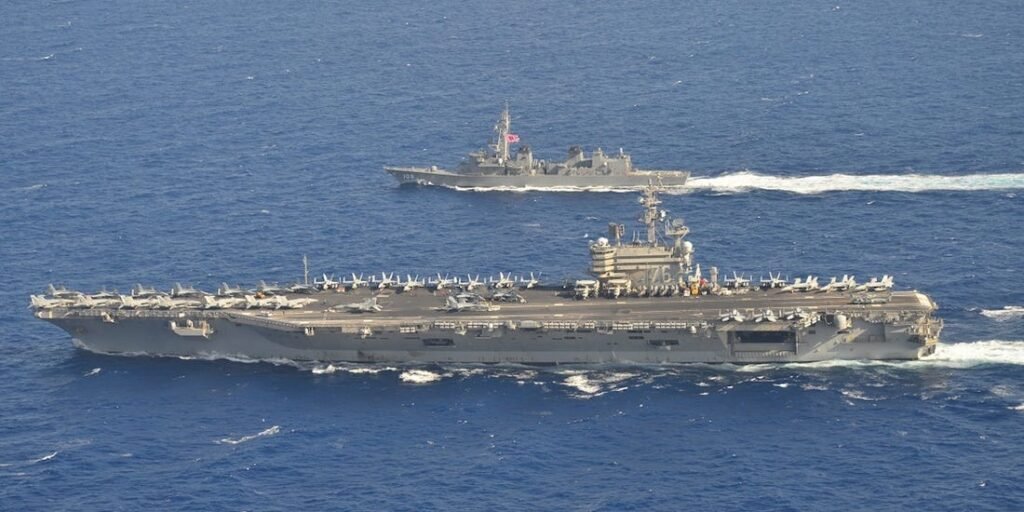
“While in the South China Sea, the strike group is conducting maritime security operations, which include flight operations with fixed and rotary wing aircraft, maritime strike exercises, and coordinated tactical training between surface and air units,” read a statement from U.S. 7th Fleet.
USS Barry (DDG-52) passed through the strait on Wednesday 14-October 2020, a first for a U.S. warship since Aug. 31. “The ship’s transit through the Taiwan Strait demonstrates the U.S. commitment to a free and open Indo-Pacific,” read the statement.
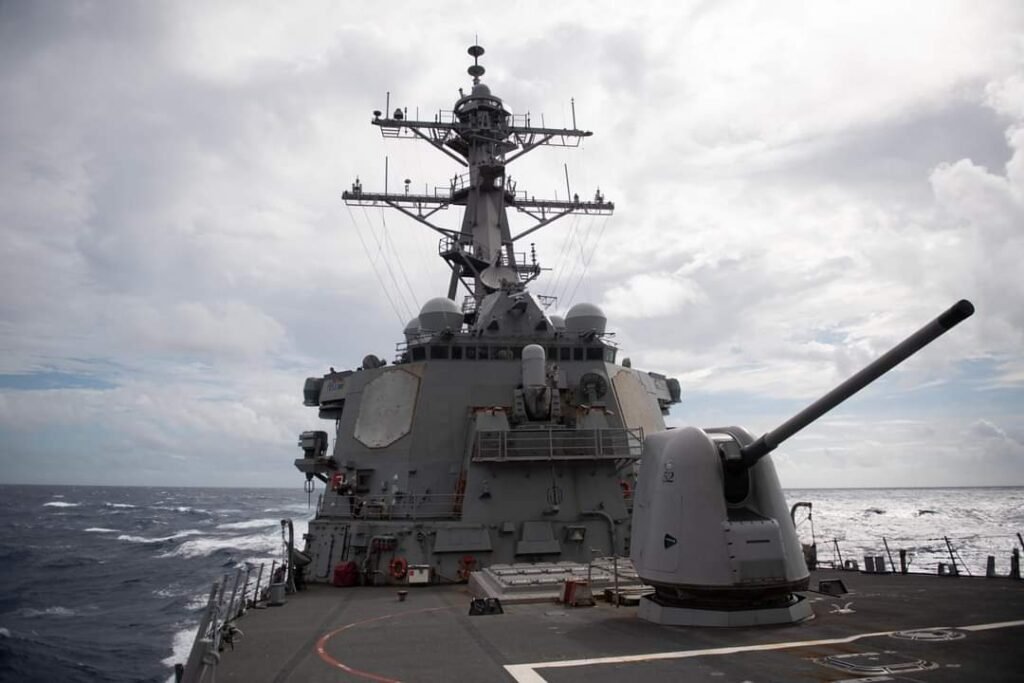
US Arms sales to Taiwan
The White House notified US Congress Monday 12-October 2020, that it was planning to move ahead with the sale of three advanced weapon systems to Taiwan, according to a congressional aide, including the advanced High Mobility Artillery Rocket System (HIMARS).
According to the sources, the administration provided informal notification over the last weekend of the proposed sales of High Mobility Artillery Rocket System — a long-range rocket artillery system that can strike targets up to 190 miles away — Standoff Land Attack Missile-Expanded Response — cruise missiles that are fired from aircraft and are designed to strike ground targets — and external sensor pods for F-16 jets.
Another congressional aide said that House Foreign Affairs Committee Republicans received several new sales for review that they are inclined to support and as well as any additional sales that support strengthening Taiwan’s defense capacity, including the ability to counter threats across the Taiwan strait.
In September as many as seven major weapons systems were making their way through the U.S. export process as the Trump administration ramps up pressure on China.
The informal notifications were for a truck-based rocket launcher made by Lockheed Martin Corp called a High Mobility Artillery Rocket System (HIMARS), long-range air-to-ground missiles made by Boeing Co called SLAM-ER, and external sensor pods for F-16 jets that allow the real-time transmission of imagery and data from the aircraft back to ground stations.
Notifications for the sale of other weapons systems, including large, sophisticated aerial drones, land-based Harpoon anti-ship missiles and underwater mines, to deter amphibious landings, have yet to reach Capitol Hill, but these were expected soon, the sources said.
A State Department spokesman said: “As a matter of policy, the United States does not confirm or comment on proposed defense sales or transfers until they are formally notified to Congress.”
Lawmakers, who are generally wary of what they perceive as Chinese aggression and supportive of Taiwan, were not expected to object to the Taiwan sales.
News that new arms sales were moving forward came after senior U.S. officials last week repeated calls for Taiwan to spend more on its own defense and to carry out military reforms to make clear to China the risks of attempting to invade.
It comes at a time when China has significantly stepped up military activity near Taiwan and as U.S.-China relations have plunged to the lowest point in decades as the U.S. election nears. President Donald Trump and his Democratic challenger, Joe Biden, have both sought to appear tough in their approach to Beijing.
There is a lot of ambiguity about how the United States would respond.
US Military Relations with Taiwan : A Historical Perspective
Besides the historical linkage that extends from the Second World War, U.S.-Taiwan security cooperation has been built upon a convergence of strategic interests: namely, in containing Communist expansion in the Asia-Pacific during the Cold War era. The signing of the U.S.-ROC Mutual Defense Treaty in late 1954 https://avalon.law.yale.edu/20th_century/chin001.asp , and the establishment earlier that decade of the U.S. Military Assistance Advisory Group (MAAG) in Taipei not only assured the security and continuity of the ROC government in Taiwan, but also enabled a more complete network of military alliances between the U.S. and Asian-Pacific democracies.
Despite US getting close to PRC China in 1970s with President Nixon visiting Beijing, military-to-military cooperation continued in the 1970s, the magnitude and depth of the relationship gradually deteriorated.
The Carter administration formalized diplomatic relations with the PRC in January 1979, the U.S.-ROC Mutual Defense Treaty terminated one year later, and the security relationship between the United States and Taiwan consequently turned into a unique – and unofficial – one.
The U.S.-Taiwan security relationship found its new legal base when the U.S. Congress passed a domestic law – Taiwan Relations Act (TRA) – governing U.S.-Taiwan relations after 1979. According to the TRA, the U.S. would “consider any effort to determine the future of Taiwan by other than peaceful means, including by boycotts or embargoes, a threat to the peace and security of the Western Pacific area and of grave concern to the United States; . . . the United States will make available to Taiwan such defense articles and defense services in such quantity as may be necessary to enable Taiwan to maintain a sufficient self-defense capability.”
The latter clause expresses the strong commitment of the United States to sell arms to Taiwan to enable it to defend itself.
Under Chinese pressure, The U.S. government signed of the August 17 a Communiqué in 1982. The communiqué cites earlier statements of the Chinese government declaring its “fundamental policy of striving for peaceful reunification of the motherland.”
From early the 1980s to mid-1990s, the annual Hwa-Mei Arms Sales Talks became the most important – and possibly the only – occasion for senior military exchanges.
Fortunately for Taiwan, nearly one month before the 1982 Communiqué was signed the Reagan administration quietly provided Taipei with “Six Assurances,” in which Washington guaranteed, among other promises, that it “would not set a date for termination of arms sales to the Republic of China,” and “would not consult with the PRC in advance before making decisions about U.S. arms sales to the Republic of China.”
The Taiwan Relations Act and the Six Assurances therefore provided Washington and Taiwan with profound bases on which to sustain their bilateral security relationship after the diplomatic and alliance relations were terminated. Though the U.S. government has continued its security assistance to Taiwan through a network of non-official arrangements, the essence and quality of the relationship did suffer a significant setback. Taiwan’s military has since experienced great isolation, and suffered not only in terms of policy dialogues and consultations, but also in terms of exchanges necessary for the advancement of military thinking and knowledge.
In a stern response by Beijing, Foreign Ministry spokesman Zhao Lijian threatened Washington to “immediately cancel any arms sales plans to Taiwan” and cut all “US-Taiwan military ties.”
The relationship received a boost in the mid-1990s, in the wake of the 1996 missile crisis in the Taiwan Strait which also initiated Taiwan’s current defense reform and transformation.
The upgrade of the U.S.-Taiwan security cooperation in the past decade has been a response to the rapid modernization of the People’s Liberation Army. Today, ironically, the relationship experiences great challenges due to the same trend. The rise of China’s economic and military power has fundamentally changed the global power balance and brought about the re-assessment of strategic posture in the Asia-Pacific region.
Due to the rapid rise of China’s global influence, or maybe because China is now the largest creditor of the United States, Beijing’s attitude toward Washington has also changed. Successive Chinese Presidents repetitive reminders that the U.S. must observe China’s “core interests,” i.e. sovereignty and territorial integrity; and the unprecedented public threats made by Chinese generals against U.S. arms sales to Taiwan all have shown a more belligerent Chinese behavior in the U.S.-China relations.
Points to Ponder
Depsite US assurances, the bottom line is that in the absence of any formal treaties, United States remains the Arms seller for Taiwan. There is a lot of ambiguity about what role will United States play in the event Communist China threatens Democratic Taiwan with Invasion.
Will the United States let the barrage of Chinese Rocket attack on Taiwan take place and once the destruction in Taiwan is over, gather public oppinion and impose trade sanctions against China? Or will United States actively defend Taiwan in the event of an attack or Invasion by China?
China recently got re-elected to United Nations Human Rights Council with a thumping majority, does United States think that the same countries that are burried under Chinese Debts will even open their mouth against China at the United Nations Security Council for trade sanctions against Chinese Invasion of Taiwan?
Would it not be good if Taiwan joins NATO instead and gets NATO protection umbrella over Taiwan immediately? Should NATO countries not dump the “One China Policy” first and recognize Republic of China (ROC), Taiwan as an Independent seperate country?
Shouldn’t the International Community first dump the “One China Policy” and recognize Taiwan and Tibet as Independent Seperate countries to begin with?
Did the International community take any stern action against China after Chinese high handedness in Hong Kong and destroying Demoracy?
What action has been taken by the International Community against Bio-Terrorist China that killed over 1.11 Million people worldwide? The business of all countries is still going on as usual and China is rapidly spreading its influance all over the world and threatening countries that do not bow down to Chinese pressure.
Follow us at:-
Twitter Handle: @newscomworld
Instagram Handle: @newscomworld
Parler Handle: @newscommuniquecom
Subscribe our : YouTube Channel https://www.youtube.com/channel/UCnKJQ3gFsRVWpvdjnntQoAA
Like our Facebook Page https://www.facebook.com/NewsComWorld
2,364 total views


